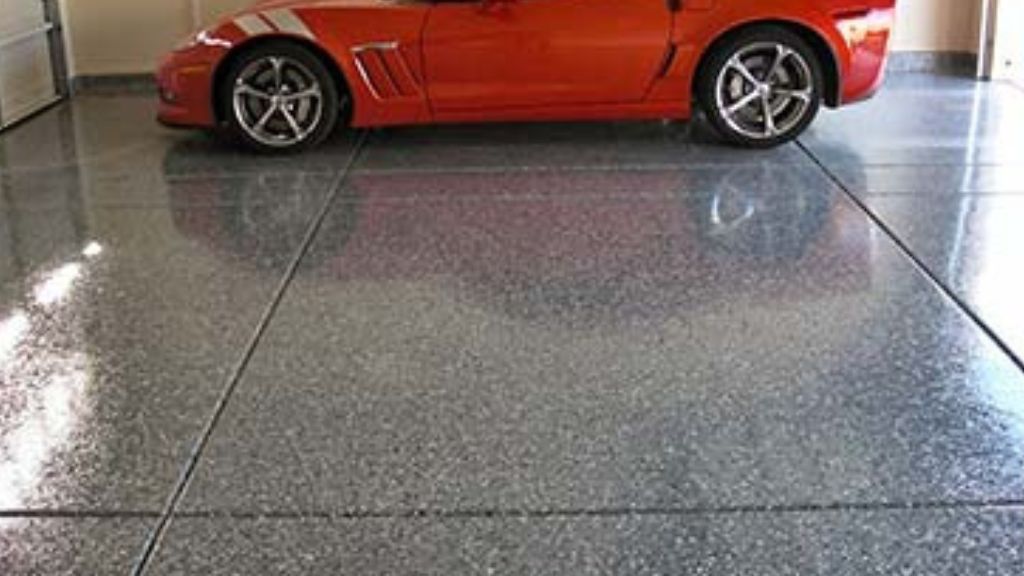Imagine this: You’ve finally decided to tackle that tired, worn-out garage floor. You’re envisioning a sleek, durable surface that can withstand everything from spilled oil to heavy tools. Epoxy floor paint seems like the perfect solution, but then you notice the subfloor: it’s wood, not concrete. Can you still use epoxy paint, or is this a recipe for disaster?

Image: clsa.us
The answer is a bit more nuanced than a simple yes or no. While epoxy isn’t traditionally designed for wood, there are ways to make it work, albeit with some careful preparation and a few extra steps. Let’s delve into the world of epoxy floor paint and how it can be applied to wood surfaces.
Understanding Epoxy Floor Paint and Wood Subfloors
Epoxy paint is known for its incredible durability, chemical resistance, and ability to create a seamless, glossy finish. It’s a two-part system, typically consisting of a resin and a hardener, which react chemically to form a robust, protective coating. However, epoxy paint is designed for concrete surfaces. Concrete is a porous material that readily absorbs the resin, allowing for a strong bond. Wood, on the other hand, is a more complex and less porous material, making adhesion a potential issue.
The challenge with applying epoxy to wood lies in the natural movement of the wood. Wood expands and contracts with changes in temperature and humidity. This can cause the epoxy coating to crack or peel over time, negating its intended durability. Additionally, wood subfloors often have a slightly uneven surface, which can make it difficult to achieve a smooth, even epoxy finish.
Can You Use Epoxy Paint on Wood? The Answer Is… It Depends!
While directly applying epoxy on wood without proper preparation is discouraged, with the right approach, it can be done successfully. Here are the key steps to ensure your epoxy coating adheres and lasts:
1. Prepare the Wood Subfloor:
Prioritize thorough preparation to create a smooth, solid foundation for your epoxy. This involves:
- Removing Existing Coatings: Scrape, sand, or chemically remove any existing finishes or paint. This creates a clean slate for the epoxy to adhere to.
- Repairing Damage: Fill in any gaps, cracks, or imperfections in the wood with a wood filler suitable for epoxy applications. Always allow the filler to cure completely before proceeding.
- Sanding: Sand the entire surface smooth using progressively finer grit sandpaper. This ensures a level surface and helps the epoxy bond more effectively.
- Dust Removal: Thoroughly vacuum and wipe the wood subfloor clean to remove all dust and debris. Any leftover particles can impede the epoxy’s adhesion.

Image: www.bestcoastepoxycoatings.com
2. Apply an Adhesion Primer:
An epoxy-specific adhesion primer is crucial. It creates a surface layer that promotes a strong bond between the epoxy paint and wood. Look for a primer specifically formulated for wood and compatible with your chosen epoxy paint. Apply the primer according to the manufacturer’s instructions. Ensure it dries completely before moving on to the next step.
3. Use a High-Quality Epoxy Paint:
Choosing the right epoxy paint is vital. Select a product specifically designed for interior floors, such as garage floors. Consider an epoxy formulated with a flexible resin that can accommodate slight wood movement. This flexibility helps prevent cracking and peeling. Read the manufacturer’s recommendations to ensure the epoxy is suitable for use on wood.
4. Follow Proper Application Techniques:
Even with careful preparation, applying epoxy to wood requires meticulous attention to detail.
- Thin Coats: Apply thin, even coats of epoxy to prevent pooling or uneven thickness.
- Proper Mixing: Carefully mix the epoxy resin and hardener according to the manufacturer’s instructions, ensuring a consistent, smooth mixture.
- Drying Time: Allow each coat to dry completely before applying the next. This ensures a durable, well-bonded finish.
- Ventilation: Work in a well-ventilated area, ensuring fresh air circulation to avoid potential health risks associated with epoxy fumes.
Tips and Expert Advice for Epoxy on Wood
For the best results, keep these expert tips in mind:
- Consider a Concrete Overlay: If you’re concerned about wood movement, a thin concrete overlay applied over the prepared wood can provide a durable, stable foundation for the epoxy.
- Professional Installation: For a truly flawless finish, consider hiring a professional epoxy floor installer, especially if you’re unsure about specific aspects of the process.
- Maintenance is Key: Even with proper preparation, epoxy on wood requires maintenance. Regularly sweep and mop the floor to prevent dirt and grime from building up, which can lead to premature wear and tear.
Frequently Asked Questions (FAQs)
Q: Can I use regular epoxy paint on wood?
A: It’s possible, but not recommended. Regular epoxy paint isn’t formulated for the expansion and contraction of wood, which can lead to cracking and peeling.
Q: What about water-based epoxy paint for wood?
A: Water-based epoxy paints are thinner and more flexible than traditional epoxy. They may offer better adhesion to wood, but they tend to be less durable and resistant to chemicals.
Q: What is the best type of epoxy for wood?
A: Look for a two-part, high-performance epoxy paint specifically formulated for interior floors. Consider an epoxy with a flexible resin, such as a polyaspartic epoxy, which can better accommodate wood movement.
Q: How long does epoxy paint last on wood?
A: With proper preparation and application, epoxy paint on wood can last several years. However, ongoing maintenance is necessary to prevent wear and tear.
Can You Use Epoxy Garage Floor Paint On Wood
Conclusion
While applying epoxy paint directly to wood requires careful preparation and specific considerations, It’s possible to achieve a durable, attractive finish with the right approach. From preparing the wood subfloor to choosing the right epoxy and using proper application techniques, you can enjoy the benefits of an epoxy floor even if your garage floor is made of wood.
Are you ready to transform your garage floor with epoxy paint? Let us know in the comments below!






